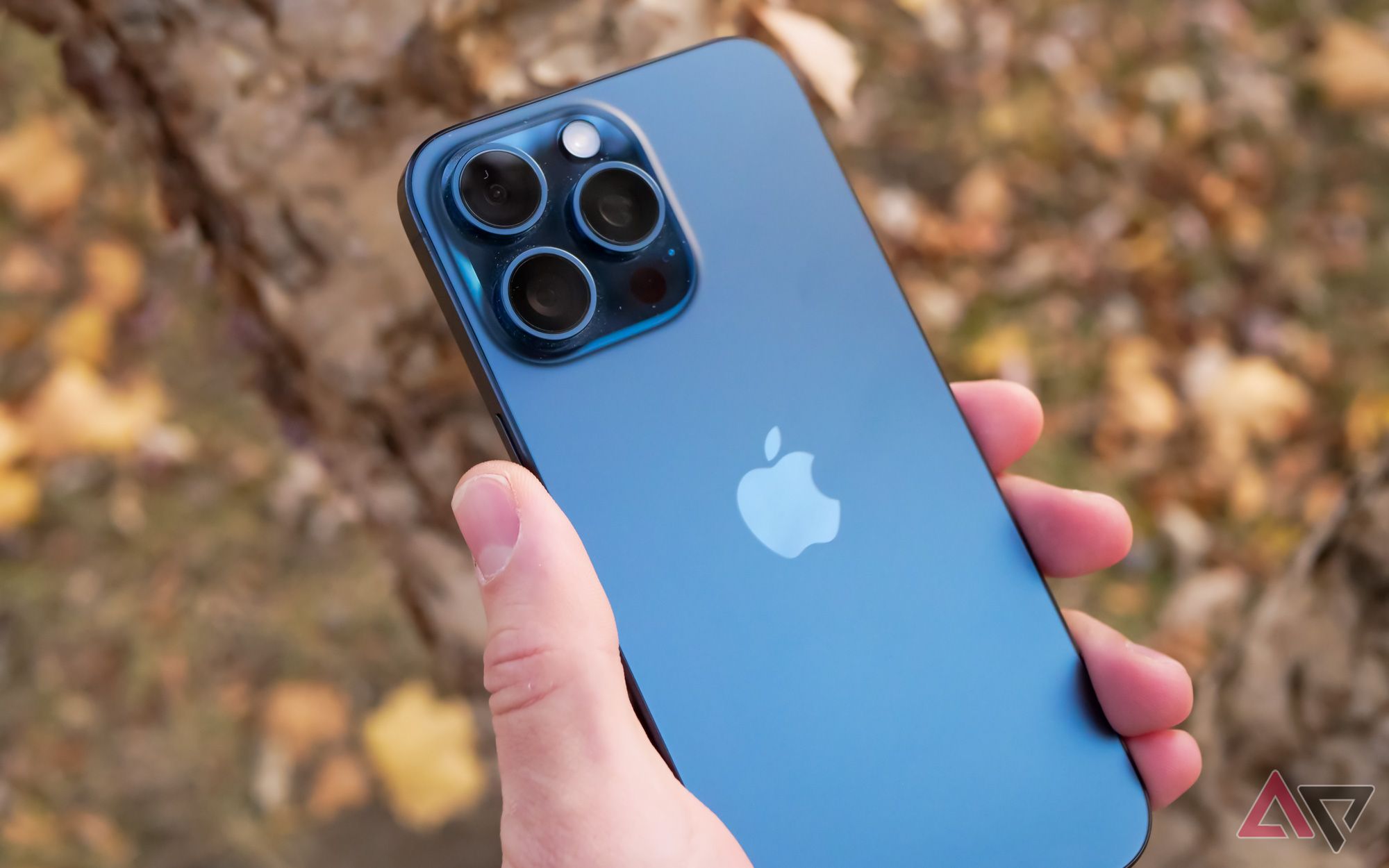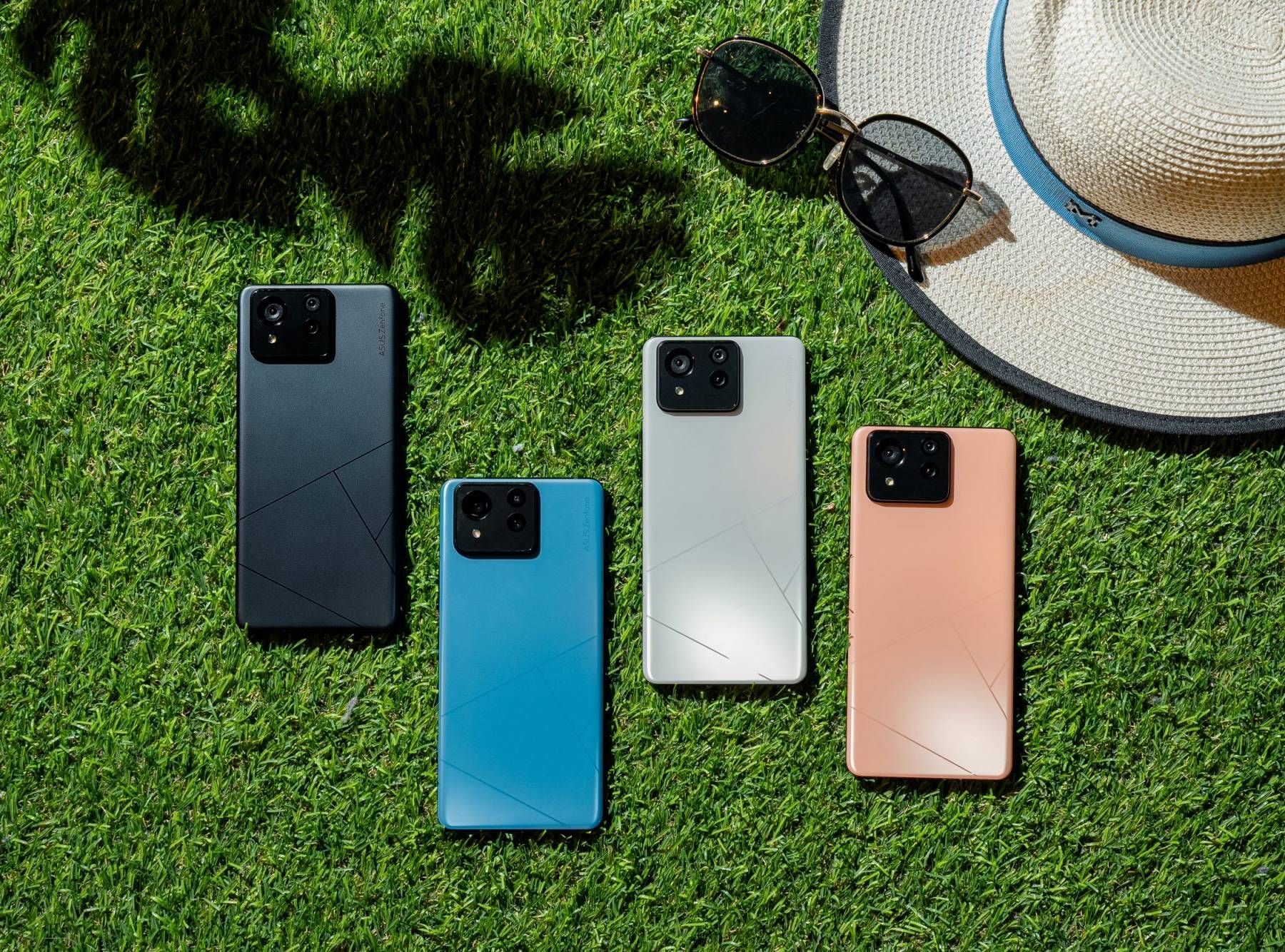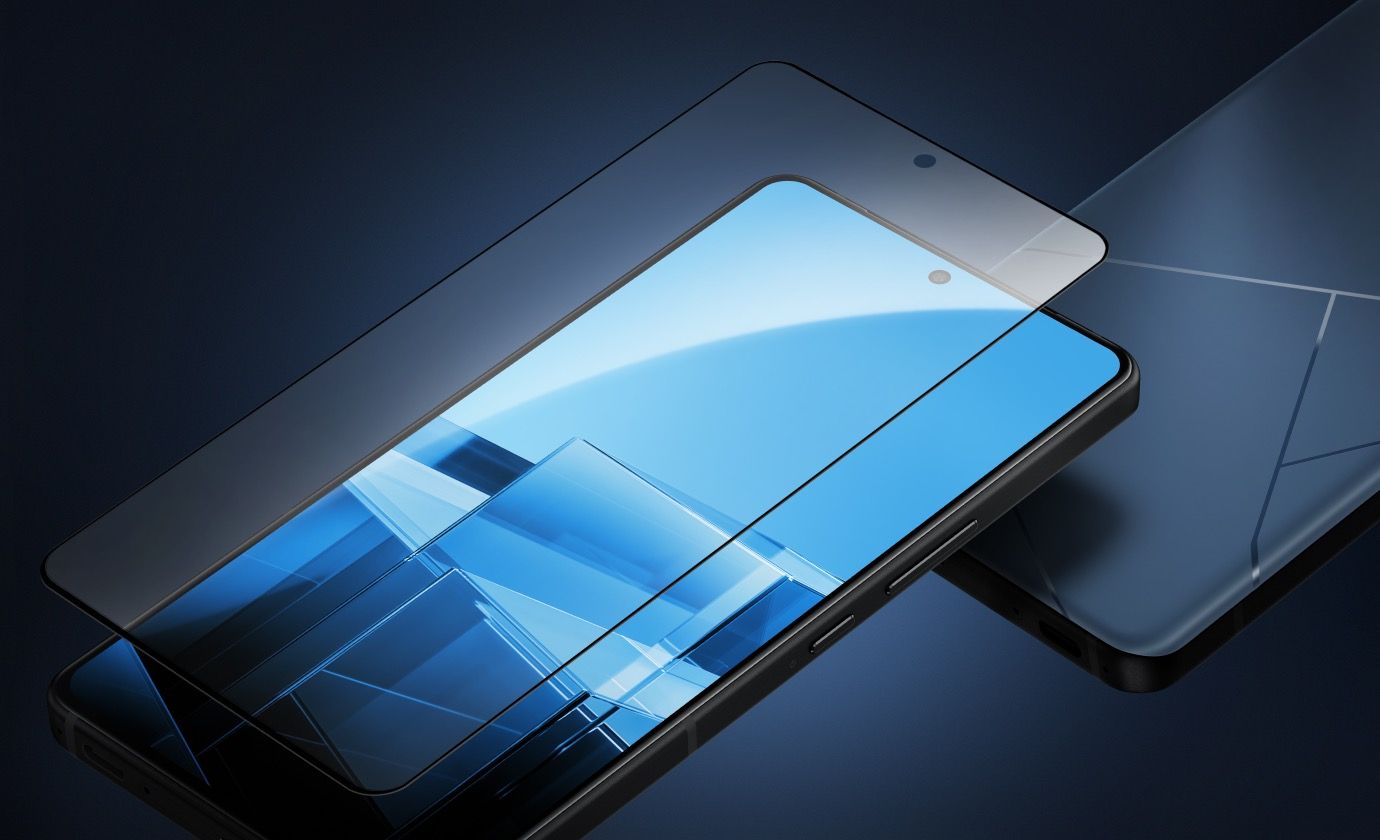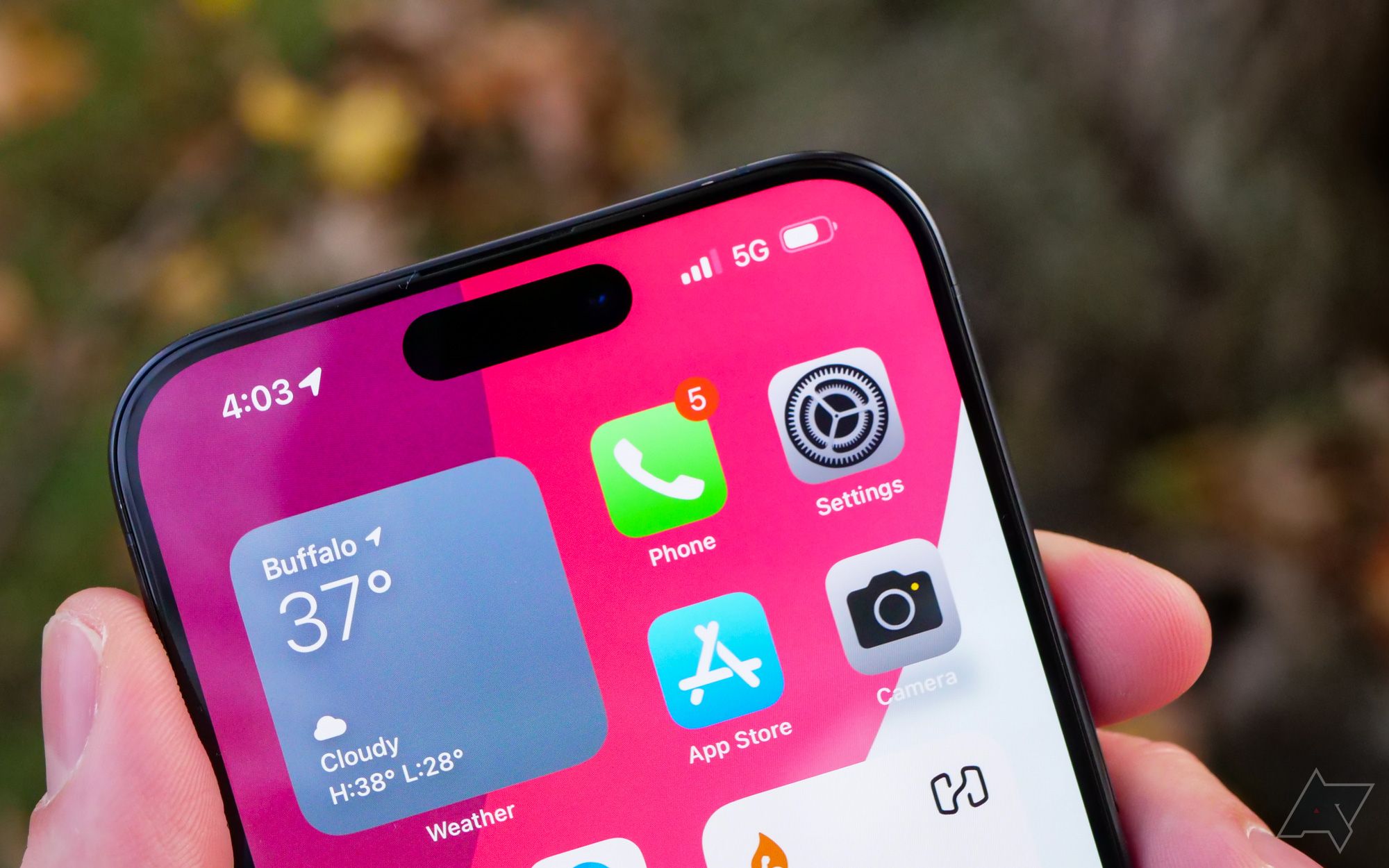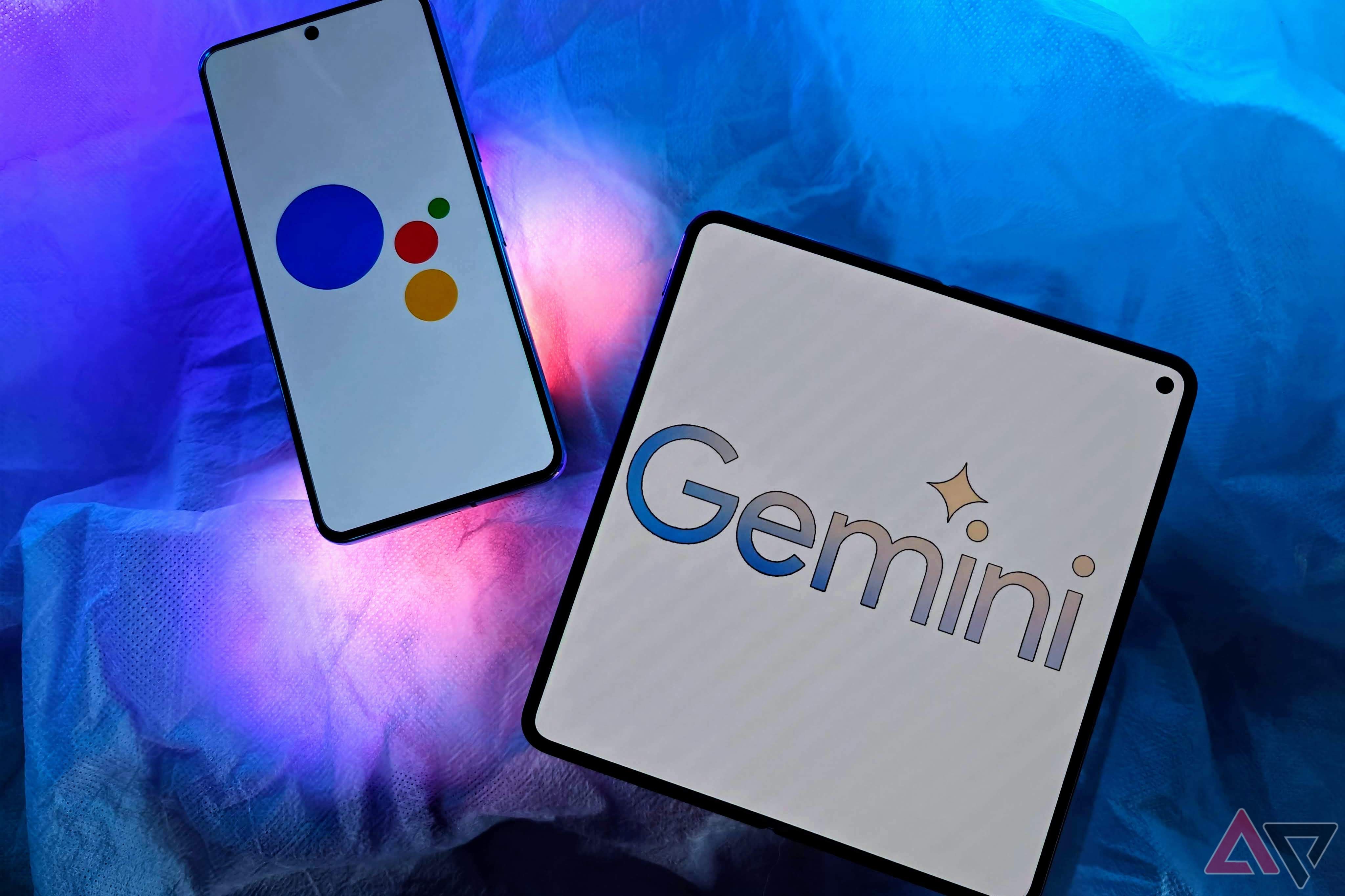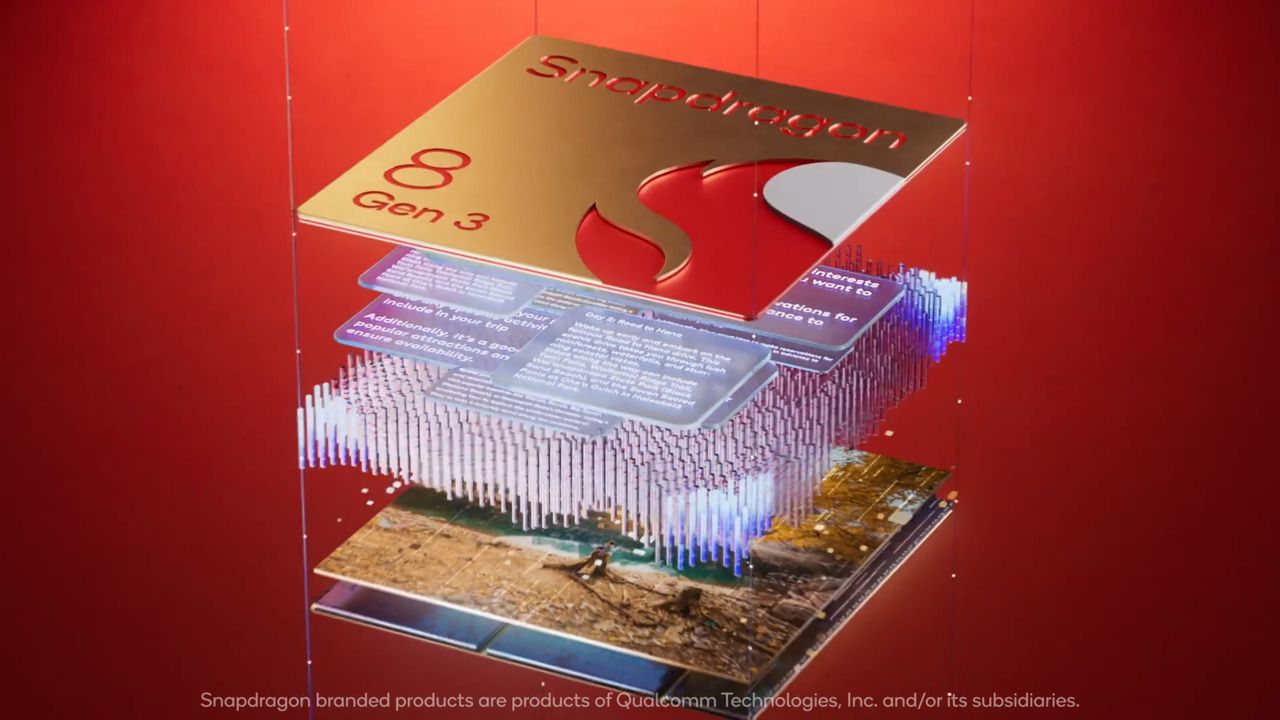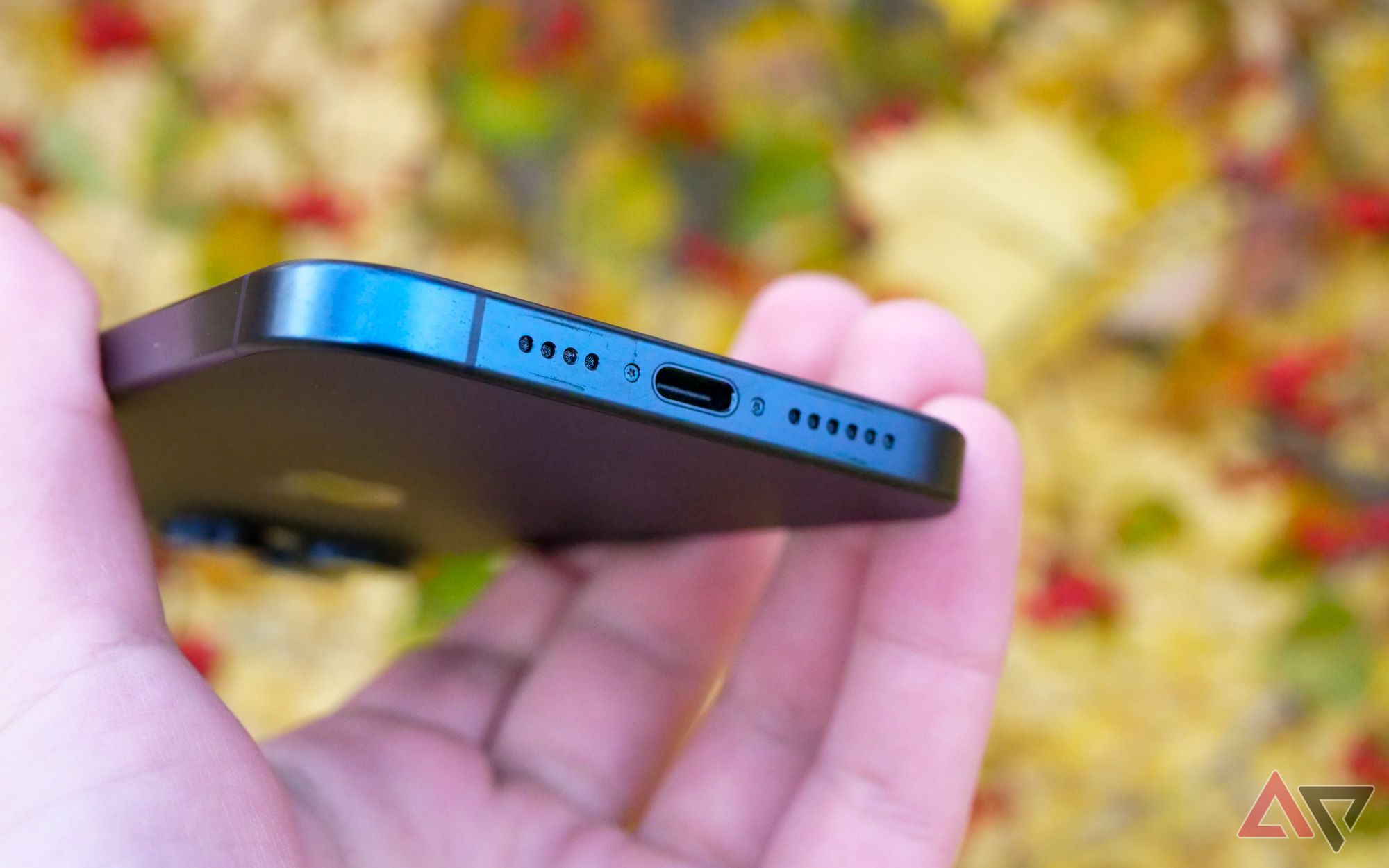-
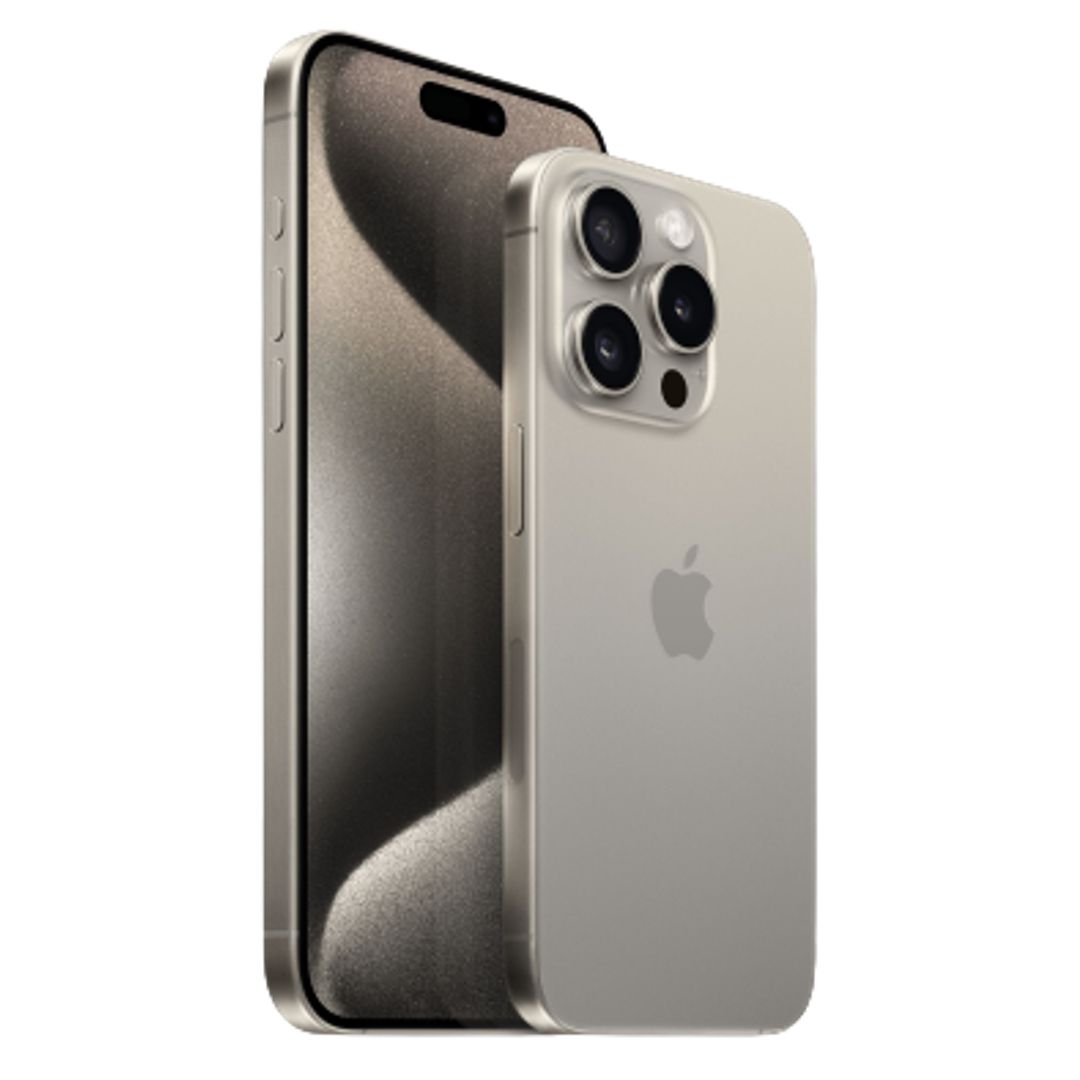
iPhone 15 Pro Max
Top pick
The biggest, most advanced iPhone leans into its clean design and tailored user experience more than ever, delivering fantastic photos and videos alongside impressive processing power and display capabilities. If the price and operating system don’t put you off, it’s one of the best phones you can buy today.
Pros- Premium fit and finish
- Nearly unbeatable raw performance
- Top-of-the-line image stabilization and processing
Cons- Incredibly expensive
- Slow charging
- Some people just don’t like iOS
-
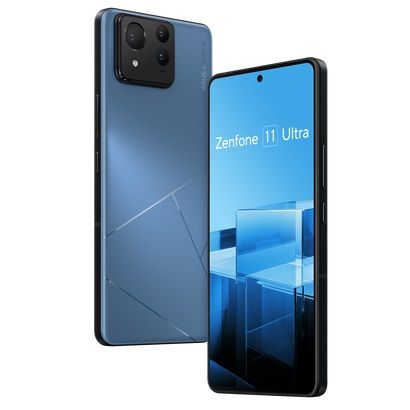
Asus Zenfone 11 Ultra
Rebranded ROG Phone
We’re not sure who asked for it, but Asus’ first 2024 smartphone (and hopefully not its last) veers directly into trendy, big-screen territory, with greater dimensions and weight than nearly any other slab phone. It also contains some of the most dependable, high-performing hardware available, although the software and its update lifespan leave a little to be desired.
Pros- Great battery life and charging
- Performance matches Android leaders
- Impressive display color and brightness
Cons- Camera could be better
- Poor update lifespan for a flagship
- Fills an already crowded niche
Lovers of gigantic phones have yet another high-end option to consider with the release of the Asus Zenfone 11 Ultra. Asus’ first foray into the large-format market may not have made serious waves, but it certainly packs some of the most capable hardware in the Android sphere.
But it’s not easy to stand out in such an increasingly crowded space, with the top manufacturers trouncing most of the competition with balanced packages, including elite hardware, refined software, and luxurious build quality. Apple’s iPhone 15 Pro Max is one such package, boasting one of the most complete feature sets ever seen in a mobile phone. Can Asus’ new phablet give it a run for its money, or was it too late of a jump onto the big-screen bandwagon?
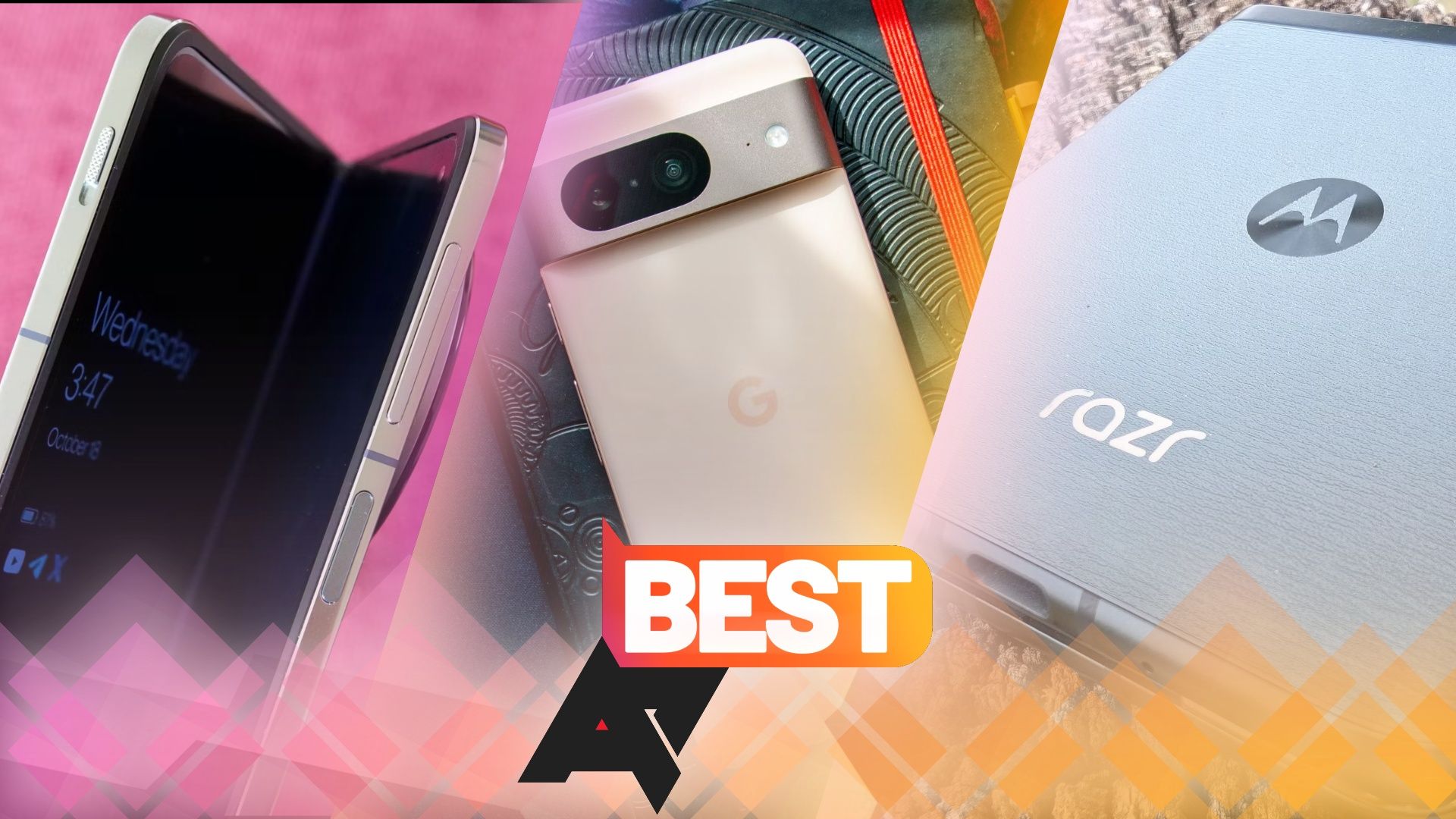
Best 5G phones in 2024
Get the fastest wireless speeds with these great phones
Price, specs, and availability
The last few years of iPads and MacBooks have fulfilled the idea that Apple products are overpriced by nature, but the iPhone 15 Pro Max and its $1,200 base price are evidence of that. Each additional tier of 512GB and 1TB of storage sets you back $200, making this one of the most expensive slab phones ever sold. Depending on what your current phone and plan look like, though, you might be able to score an upgrade deal, trade-in, or contract-based discount.
Asus tends to target a slightly more niche audience and positions the Zenfone 11 Ultra just below other Android flagship MSRPs at $900. While it’s not the absolute best value on a premium smartphone, it suits a wider range of prospective buyers than Apple’s latest halo model. Unfortunately, Asus doesn’t offer trade-ins and has zero pull with US carriers, so you’re forced to buy the device outright. You can do so via Asus’ website or a select few third-party retailers, including Amazon and Newegg.
Both are readily available in major markets, and you can trust at least the iPhone to remain on the menu for many months to come. Asus makes and sells considerably fewer phones, however, and it’s not exactly renowned for keeping high-end devices in stock over the long term. For now, though, you have your choice of variants and colors.
-
iPhone 15 Pro Max Asus Zenfone 11 Ultra SoC A17 Pro Qualcomm Snapdragon 8 Gen 3 Display type OLED, 120Hz LTPO AMOLED, 120Hz (144Hz gaming) Display dimensions 6.7″ 6.78″, 20:9 Display resolution 1290 x 2796 2400 × 1080 RAM 8GB 12GB LPDDR5X Storage 256GB, 512GB, 1TB 256GB UFS 4.0 Battery 4,441mAh 5,500mAh Charge speed 35W wired, 15W wireless 65W wired, 15W wireless, 10W reverse wireless Charge options USB-C wired, MagSafe wireless USB wired, Qi wireless, reverse wireless Ports USB-C 1x USB-C 3.2, 1x 3.5mm SIM support Dual SIM (eSIM) Dual-SIM dual standby Operating System iOS 17 Android 14 Front camera 12MP 32MP f/2.5 Rear camera 48MP main; 12MP ultrawide; 12MP, 5x telephoto 50MP f/1.9 main gimbal OIS; 32MP f/2.4 3x telephoto OIS; 13MP f/2.2 120˚ ultrawide Cellular connectivity LTE, 5G, mmWave 4G LTE, sub-6 5G Wi-Fi connectivity Wi-Fi 6E Wi-Fi 7 Connectivity UWB, NFC NFC Bluetooth Bluetooth 5.3 Bluetooth 5.4 with aptX Adaptive/Lossless Dimensions 159.9 x 76.7 x 8.25 mm 163.8 x 76.8 x 8.9mm Weight 221g 224g IP Rating IP68 IP68 Colors Natural Titanium, Blue Titanium, White Titanium, Black Titanium Eternal Black, Skyline Blue, Misty Gray, Desert Sand Stylus No No
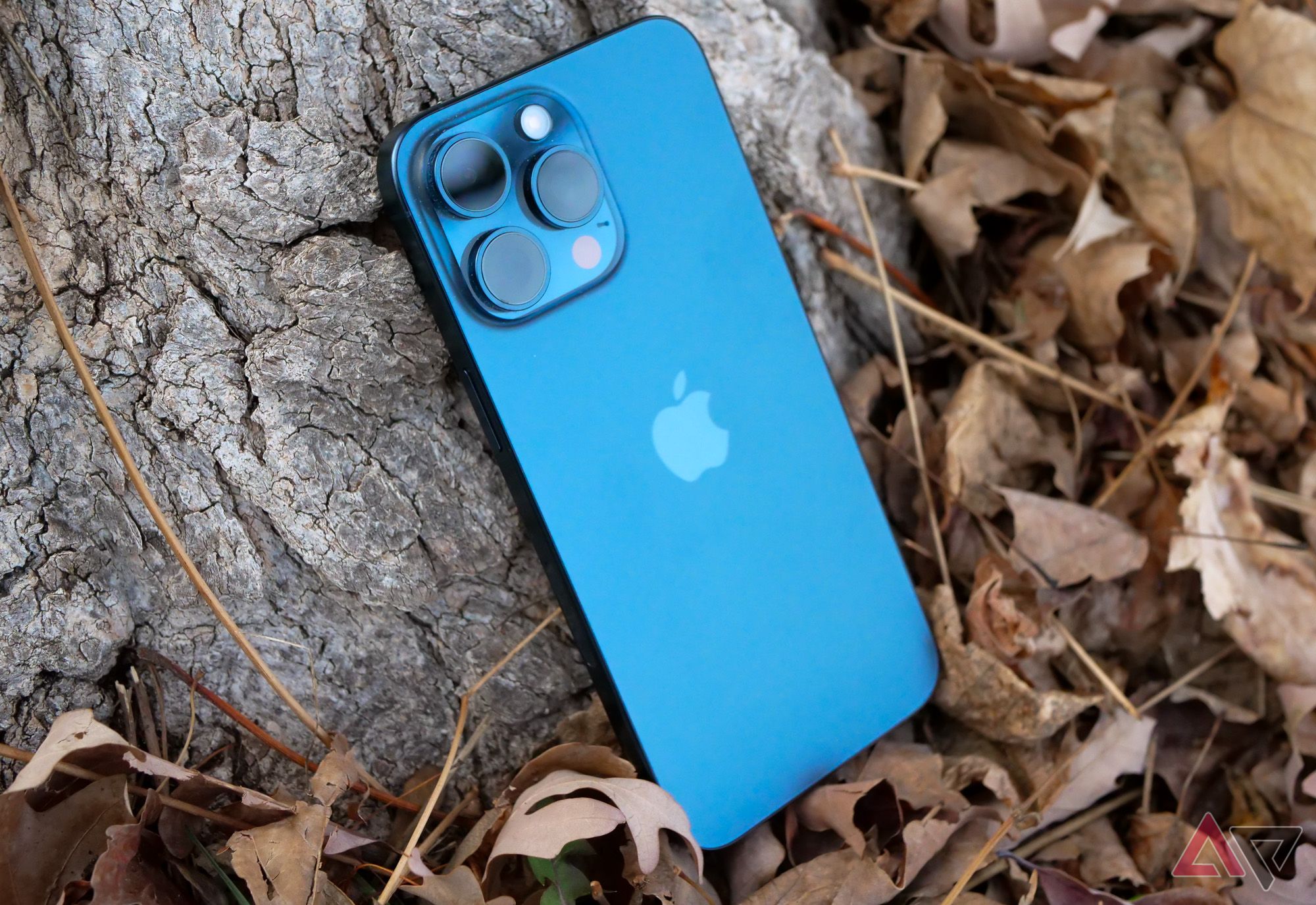
iPhone 15 Pro Max review: The phone everyone else is choosing
The bubbles might be bluer, but is the grass greener?
Design
An Android phone taking cues from Apple?!
The trendsetting iPhone lineup has leaned so thoroughly into its stark aesthetic that it’s practically evolved into the monolith from 2001: A Space Odyssey. That’s not necessarily a criticism, as Apple’s top-level flagship feels like a legitimately luxurious device. The just-round-enough edges make it comfortable to hold, the titanium body exudes premium build quality, and the slim, consistent bezel rounds out a predictably professional look and feel.
By comparison, Asus’ first huge smartphone suffers from a bit of an identity crisis. The company’s ROG Phone series sports a little bit more of an in-your-face design than most consumers want, and Asus has apparently decided to abandon the chic form factor of its as-yet-unreplaced smaller Zenfone. Notably, the ROG Phone and Zenfone teams were merged in mid-2023, spurring rumors of the Zenfone’s potential discontinuation.
Asus’ result is a somewhat boring slab that definitely doesn’t feel cheap but also doesn’t stand out in any significant way. Possibly most significant, from an appearance standpoint, is the move to an almost retro-styled rectangular camera bump that resembles the iPhone’s in no small way, and marks a major departure from the smaller Zenfone’s standout twin camera lens array.
Do high costs equal real-world ruggedness?
Source: Asus
Physically speaking, they both technically sport IP68 ratings, but one’s not quite like the other. The Zenfone 11 Ultra, like most IP68 devices, is tested for safety from 1.5-meter submersion for 30 minutes. But IPX8 testing is performed according to the manufacturer’s desired standards, and Apple’s goes above and beyond most others.
Apple’s testing promises protection from 6-meter submersion over that same 30-minute period. Even that’s a little conservative, going by the various anecdotal accounts of lost iPhones being fished out of rivers only to power on and work flawlessly once dry. We definitely wouldn’t recommend tossing your iPhone in the pool on purpose, but it’d likely be fine if you did. In the long run, the Zenfone 11 Ultra might be roughly as watertight, but it certainly doesn’t have the same pedigree for durability.
Unfortunately, the biggest iPhone was one of the few high-end handsets to fail Zack from JerryRigEverything’s all-out stress test. While the phone’s internals and actual operation were largely unaffected, the back glass shattered relatively easily on the first bend attempt. What a coincidence: Apple just so happened to reduce the cost of the back glass replacement from $550 for the 14 Pro Max to $200 for the 15. Looks like it knew something we didn’t.
Does the 11 Ultra represent the future of Zenfones?
More than a few concerned consumers have criticized Asus for ditching its relatively compact Zenfone in favor of the trendy, 6.78-inch Ultra. While it’s still possible Asus will add a compact flagship to its current stable, we’ve not heard so much as a rumor that it’ll actually happen.
A lot of enthusiasts are pretty up in arms about this. But wouldn’t it be funny if Asus surprised us all with the early summer announcement of a smaller Zenfone 11 companion? You can do it, Asus. We believe in you.
Display
Apple’s OLED tech officially dethroned, at least on paper
Source: Asus
It’s hard to get a real bearing on display quality using benchmarks and measurements, since a lot of high-end phones produce image quality that maxes out common media formats and the human eye’s ability to tell two colors apart. But the Zenfone 11 Ultra’s impressive DCI-P3 coverage of nearly 110% (in real-world, third-party testing, no less) does tell a story.
It wasn’t so long ago that iPhones easily carried the title of best smartphone display from year to year, but Android flagships have leapfrogged everybody’s favorite fruit-themed electronics giant in recent years. Case in point, the Zenfone exceeds the iPhone’s DCI-P3 coverage by a whopping 25%, in addition to a 144Hz gaming mode and higher peak brightness.
Take brightness readings with a grain of salt, though; the iPhone came out ahead in manual and auto brightness mode, so the Zenfone’s technically higher brightness likely only comes into play in small areas of the screen during HDR playback. With that in mind, the iPhone 15 Pro Max is one of the rare phones to support Dolby Vision, whereas the Zenfone 11 Ultra is limited to the less effective HDR10.
Other minor differences include the Zenfone’s slightly taller aspect ratio and the iPhone’s marginally higher pixel density. Apple’s proprietary Corning Ceramic Shield glass resists scratches and cracks extremely well, although the Zenfone’s Gorilla Glass Victus 2 is just about neck and neck with it.
Software
Worlds apart, but also more similar than ever
We know we’re not going to change any minds here; a certain segment of iPhone and Android users won’t entertain the idea of switching teams, no matter the merits. But as different as they are, iOS and Android are still just two smartphone operating systems. They accomplish the same end goal, and while they do so differently, there’s no massive learning curve moving from one to the other in 2024.
Contrary to popular belief, iOS apps often do allow some customization.
If you’ve used both platforms, the biggest differences are obvious. Few Android users fall in love with iOS’ lack of home screen customization, clumsy app organization, or muddied notification management. But plenty of longtime iPhone users don’t notice any of those issues.
Asus’ custom implementation doesn’t stray too far from stock Android and gives you the option to install said vanilla Android on setup or switch to largely stock settings at any time during use, instead of forcing you to use the company’s bespoke skin. And while it’s not quite as malleable as, say, Samsung’s OneUI, Asus’ ZenUI does offer various useful customization options.
Depending on who you ask, Apple’s interface experience is either remarkably more streamlined or significantly less user-friendly than near-stock Android’s. The original smartphone manufacturer has done a good job implementing intuitive menus and navigation, and generally speaking, features simply work the way they should, with no prodding or pleading involved.
In practice, Android users sometimes find the iOS approach heavy-handed and restrictive, but once people get used to the Apple experience, they tend to speak highly of it (not me, personally, but I’m just a grumpy old man yelling at cloud storage).
Long-term support: a massive divergence
After the top two Android smartphone manufacturers pledged an impressive seven years of full update support, every other company’s new releases have been met with skepticism as to their comparatively short Android update lifespans. Meanwhile, Apple’s been sitting in the corner probably chuckling to itself that its competitors are still arguing about whether to offer two or three complete OS upgrades.
If there’s one thing we can all objectively praise Apple for, it’s the long-term commitment to device software and security support. Misleading (and, honestly, not entirely malicious) iPhone 6S throttling notwithstanding, Apple’s iconic phones are well-known to stand the test of time and serve respectably for at least 6 years after release, still receiving at least a trickle of new features throughout that time.
Asus’ ongoing software support is less promising. It ships with Android 14 and will see upgrades through Android 16, and security patches through at least Q2 2028. Granted, it’s not like you have to throw a phone away once it stops receiving Android upgrades, as most critical apps still support Android versions from a few years ago. But newer interfaces tend to be more convenient, and more refined OS implementations can improve device performance and efficiency, so it’s unfortunate that Asus gives its users the short end of the stick here.
Which has more, better AI tools?
Good question. Who knows? Is Google Assistant an artificial intelligence, or does it need access to the Google Gemini model before it’s considered AI? Are large language models even really AI? Can manufacturers continue to get away with hilariously branding simple text recognition, voice recognition, and camera subject tracking as somehow AI-fueled tools? Will the very term “AI” ever again have a single, reliable meaning in general parlance?
The answer to the last question is, “Probably not,” but the rest of the questions remain up in the air. Apple’s waited until it’s essentially the last of the major manufacturers to really lean into the AI fad, although it’s been using machine learning to shore up on-device features for at least a little while. The current iOS 17, for example, introduced personal voice replication that helps those with speech difficulties communicate more easily.
Asus, like other Android developers, makes a more AI-forward push with its latest flagship. It offers a slate of the kind of useful machine learning-based tools we love from other brands, including voice recording transcription and live call translation. Without access to the underlying software, it’s hard to determine if we’re really looking at significant AI implementation (it’s not like live audio translation’s a brand-new thing), but they’re nonetheless highly useful features that we’re glad to see getting more popular.
For what it’s worth, all of Apple and Asus’ current AI tools operate exclusively on the devices, so there’s no worry of future charges for cloud-based AI processing, like with Samsung’s Galaxy AI suite.
Performance
Two extremely capable mobile devices
Source: Qualcomm
If you’re spending nearly a grand or more on a phone, you expect it to perform up there with the best. Both of these phones do. The A17 Pro system-on-a-chip in the iPhone roundly beats any Android SoC in single-core processing, and the Zenfone’s Snapdragon 8 Gen 3 delivers scorching multicore performance and class-leading efficiency. The iPhone (as usual) has less RAM, but the lower overhead of iOS means it doesn’t actually need as much system memory to maintain blazing-fast response times.
Interestingly, while Apple computers typically occupy the last spot on the list for gamers, iPhones are the other way around. Few mobile devices offer similar gaming performance bundled with such versatility as Apple’s smartphones, which actually offer ports of full-fledged (and relatively recent) AAA games like Resident Evil: Village. Console games at 60 FPS on a handheld, fanless device that doesn’t even run Windows or a Linux-based OS is actually quite the feat and speaks to Apple’s hardware and software engineering prowess.
All that’s not to call the biggest Zenfone a slouch in any way. Its Qualcomm chipset handles the most resource-intensive software with ease, all while sipping power at an impressively low rate. The big display gives you plenty of room for multitasking, which won’t bog down the hardware in any way. It’s safe to say that neither of these big flagships poses any performance drawbacks whatsoever.
Missing Zenfone 11 Ultra connectivity
Performance is more than just processor benchmarks, though. Wireless connectivity also plays a big role in how quickly and thoroughly a phone works and the iPhone has the Zenfone beat here in one key way. It’s not the Apple’s UWB support, which can closely pinpoint nearby AirTags or even serve as your car’s wireless key fob.
A forward-thinking take from Qualcomm on the future of 5G frequency bands.
Instead, the difference is in 5G support; the iPhone boasts the most complete slate of 4G and 5G band support in the world, and the Zenfone lacks cutting-edge mmWave support entirely. That’s not the end of the world, but it is unfortunate that Asus went so far in producing a top-of-the-line flagship, only to skip one of the most phone-centric modern smartphone features.
On the other hand, the Zenfone does offer audio connectivity that few other flagships can. It’s one of the extremely rare high-end models with a headphone jack, and its full slate of aptX HD, aptX Adaptive, and aptX Lossless Bluetooth codecs help make the best of a massive range of wireless headphones. iPhones, the 15 Pro Max included, are limited to SBC and AAC — although, in truth, the majority of users won’t notice a tangible difference using anything more high-resolution than AAC.
Battery life
Two different approaches to all-day-plus operation
First things first: They’re both among the best phones for battery life overall, and we don’t have complaints about either. The Zenfone’s 5,500mAh battery and highly efficient SoC make it nearly impossible to drain in a day, while iOS’ walled garden and low overhead drag the iPhone’s seemingly subpar 4,441mAh cell into the upper echelon of day-to-day longevity.
Despite the gulf in battery sizes, real-world testing puts the two handsets remarkably close in terms of battery life. Several hours of daily screen time won’t risk depleting the battery, even if some of them include resource-intensive gaming.
Apple’s continued charging stubbornness
The iPhone’s much-anticipated, regulation-forced switch to USB-C is a good thing for consumers, but Apple didn’t leverage the new connector quite as thoroughly as it could have. The 15 Pro Max retains its predecessor’s mediocre charging speed, measuring a paltry 26W at its fastest — but even that’s an overstatement since using a 30W charger over a 20W one resulted in a negligible full-charge time decrease of just 8%.
Granted, it can go from empty to 50% in just under a half-hour, which isn’t bad. Another 25 or so minutes bring it to 80%, again not a terrible figure. But at 80% it steps down to a mere 8.6W, resulting in a 2-hour time span from empty to full. On a $1,200 phone. That’s not a great look.
At the clear other end of the spectrum, Asus’ big flagship fills up from empty in less than 45 minutes thanks to a largely unregulated 65W rate. It doesn’t include a charger (like battery leader OnePlus 12 does), but since it only leverages the common USB-PD standard, there’s a wealth of great chargers to choose from, and there’s a decent chance tech-savvy consumers already have a fully compatible one on hand. In the rare event you do experience charge anxiety with the Zenfone 11 Ultra, a quick top-up should set you right as rain.
Cameras
Or, the biggest deciding factor in most smartphone purchases today
Not unlike its former stranglehold on industry-leading display technology, the iPhone’s photo processing and video stabilization once ran far ahead of the pack, consistently outperforming every Android handset. That’s far from true today, and the increasingly advanced smartphone photography space offers up fierce competition that would, ideally, force smaller manufacturers to focus on consistent, user-friendly image capture.
The iPhone 15 Pro Max takes nearly perfect pictures in almost any lighting condition.
Asus’ imaging hardware and signal processing work well, producing true-to-life colors and generally consistent white balance in most lighting conditions. The 32MP selfie camera also does a better job than most. But the Zenfone 11 Ultra really shines when it comes to image stabilization, an area where the top iPhones typically lead the industry. The internal gimbal Asus uses does a remarkably good job at capturing blur-free pictures and stable video free from jerk and jitter.
Ultimately, this is a case of good vs. great. The Zenfone’s cameras don’t take the absolute best pictures possible (that award still goes to the Pixel 8 Pro), but its capable lens array and competent software integration make it a fine choice for shutterbugs. But Apple’s imaging hardware and, in particular, its software, do an even better job.
You won’t have to mess around with any settings to get a good shot on the iPhone 15 Pro Max. And as good as the Zenfone’s video recording is, the iPhone’s does edge it out a bit. Most notably, if you’re at all interested in professional-level video capture, you can’t skip the iPhone and its support for the impeccable ProRes codec that’s actually been used to shoot multiple feature films.
Which one’s right for you?
It’s not easy to justify a $300 price difference, but the biggest, most expensive iPhone yet does make a great case. It embodies starkly refined design, user-focused interface optimization, and consistently excellent camera performance. The charging kinda stinks, but the hardware’s efficient enough that you’ll rarely need to top the battery off during the day.
If the high cost and philosophically Android-opposed operating system don’t put you off, the iPhone 15 Pro Max is a more complete device than the Zenfone 11 Ultra. And on the off chance you’re already using a top-shelf iPhone, the new Asus doesn’t offer any good reasons to ditch it.

iPhone 15 Pro Max
Top pick
An all-around winner for those who can stomach the price
If you’re willing to commit to the significantly different iOS experience, the iPhone 15 Pro Max gives you a great excuse. It does nearly everything right, and packs the hardware capabilities and build quality to last through years of Apple’s long-term support.
Nonetheless, as we mentioned earlier, some people don’t want to migrate to a new OS. If you’re into big, bright, especially colorful screens and, for whatever reason, don’t want to invest in a Pixel or Galaxy, the Zenfone 11 Ultra is a fine choice.
Its hardware performs up there with the best and will continue to do so for years, even after the phone’s done receiving Android updates. While it’s not particularly exciting, the new large-format Asus is a well-engineered piece of equipment.

Asus Zenfone 11 Ultra
Another big phone
Not a bad choice, just not terribly interesting
Asus’ Zenfone 11 Ultra makes all the right hardware moves but is held back somewhat by bland design, a middling update lifespan and a general lack of purpose. Nonetheless, it’s an immensely powerful device with a respectable OS implementation and a lower price than other flagships.
Source link

